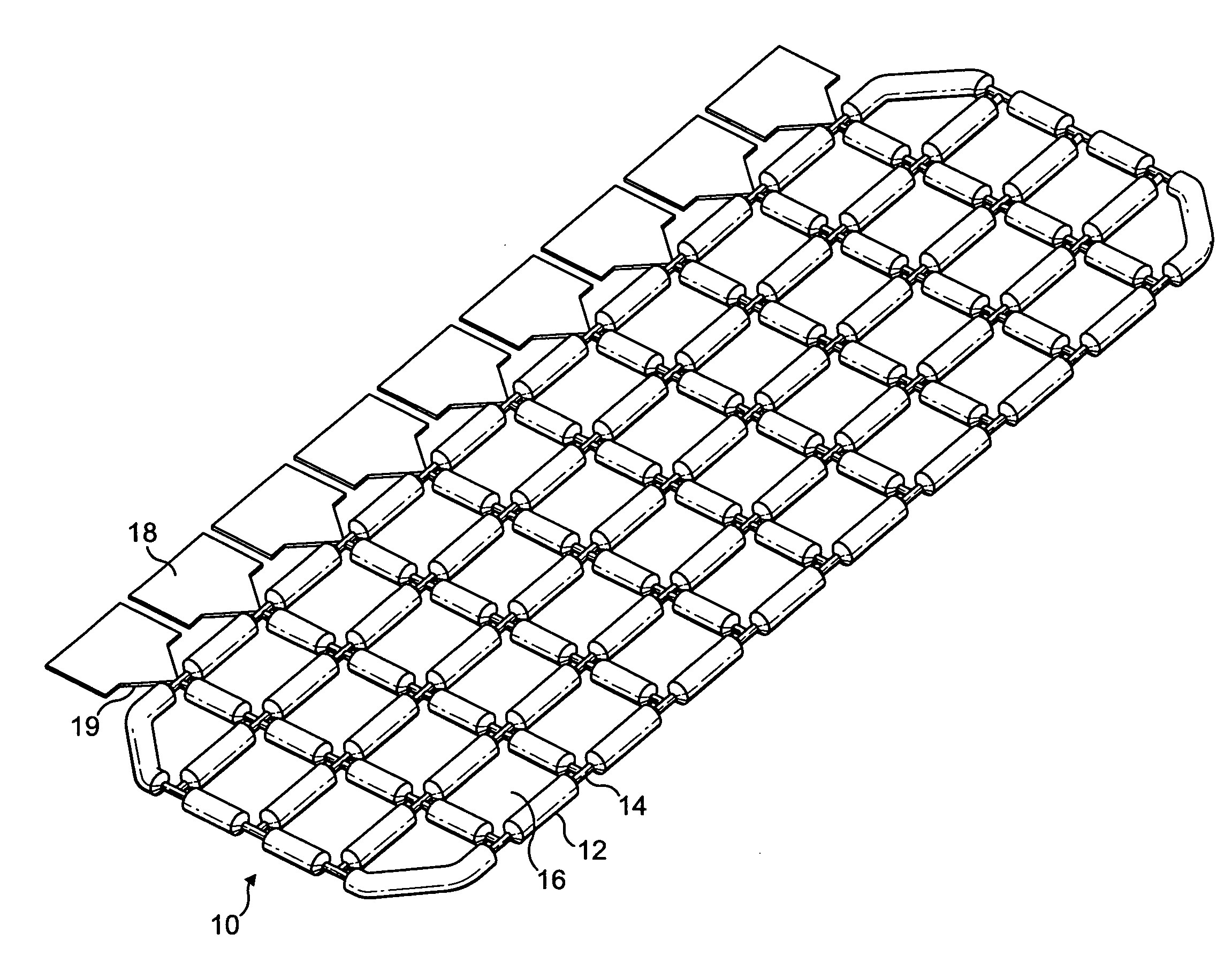Separator for separating windings
a separation device and winding technology, applied in the direction of maintaining the distance between parallel conductors, electric cable installations, transportation and packaging, etc., can solve the problems of increasing the exposed surface area of the windings, and achieve the effect of increasing the thickness of the separator, reducing the size of the apparatus, and adding to the bulk of the apparatus
- Summary
- Abstract
- Description
- Claims
- Application Information
AI Technical Summary
Benefits of technology
Problems solved by technology
Method used
Image
Examples
Embodiment Construction
[0038]An embodiment of the present invention relates to a separator for separating groups of windings in an electrical machine such as a generator or motor. In such a machine the stator is normally wound with a number of groups of windings. Normally the number of groups of windings is equal to the number of poles times the number of phases. For example, the stator of a four-pole, three-phase machine may carry twelve groups of windings. In order to achieve a compact design, the groups of windings often overlap with each other.
[0039]In a rotating electrical machine the stator normally acts as the armature and carries the main electrical power. Since windings of different phases may overlap with each other, considerable electrical potential may be present between overlapping groups of windings. This creates the need to separate groups of windings electrically. Previously this has been achieved by providing a layer of composite paper between groups of windings, or substantially increasi...
PUM
| Property | Measurement | Unit |
|---|---|---|
| temperatures | aaaaa | aaaaa |
| thickness | aaaaa | aaaaa |
| thickness | aaaaa | aaaaa |
Abstract
Description
Claims
Application Information
 Login to View More
Login to View More - R&D
- Intellectual Property
- Life Sciences
- Materials
- Tech Scout
- Unparalleled Data Quality
- Higher Quality Content
- 60% Fewer Hallucinations
Browse by: Latest US Patents, China's latest patents, Technical Efficacy Thesaurus, Application Domain, Technology Topic, Popular Technical Reports.
© 2025 PatSnap. All rights reserved.Legal|Privacy policy|Modern Slavery Act Transparency Statement|Sitemap|About US| Contact US: help@patsnap.com



